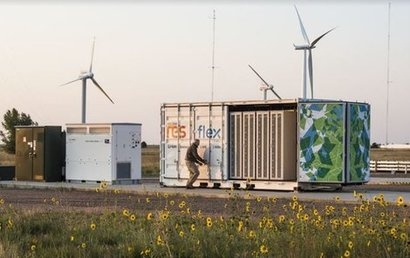
The new report published today by the International Renewable Energy Agency (IRENA) says that the falling price of batteries could stimulate 17-fold growth of installed battery storage, opening up a number of new commercial and economic opportunities.
The report ‘Electricity Storage and Renewables: Costs and Markets to 2030 assessment of electricity storage in stationary applications’ was launched during the ‘Innovation for Cool Earth Forum’ in Tokyo, Japan. It found that the global storage capacity could triple if countries double the share of renewables in the energy system.
“As storage technology improves and prices decline, both utility-scale and small-scale, distributed applications could grow dramatically, accelerating renewable energy deployment” said IRENA Director-General Adnan Z. Amin. “In this dynamic, low-carbon energy environment, now is a crucial time for storage technology. This research demonstrates that the business case for renewable energy continues to strengthen," continued Mr. Amin, "positioning it firmly as a low-cost and secure source of energy supply.”
Dolf Gielen, Director of the IRENA Innovation and Technology Centre and an author of the report, added that the growth of lithium-ion battery use in electric vehicles and across the transport sector over the next 10 to 15 years is an important synergy that will help drive down battery costs for stationary storage applications. The trend towards electrified mobility will also open up opportunities for electric vehicles to provide vehicle-to-grid services, helping feed a virtuous circle of renewable energy and storage integration.
The report, which is focused on stationary applications, highlights that while pumped-hydro systems currently dominate total installed power storage capacity, with 96 percent of the installed electricity storage power globally, economies of scale and technology breakthroughs will support the accelerated development and adoption of alternative storage technologies, such as lithium-ion (Li-ion) batteries and flow batteries.
Stationary electricity storage can directly drive rapid decarbonisation in other key segments of energy use, such as in the transport sector where the viability of battery storage for electric vehicles (EVs) is improving fast. At the end of 2016, the cost of Li-ion batteries had fallen by as much as 73 per cent for transport applications from 2010.
While Li-ion batteries in stationary applications have a higher installed cost than those used in EVs, in Germany, small-scale Li-ion battery systems have also seen their total installed costs fall by 60 per cent between the fourth quarter of 2014 and the second quarter of 2017.
By 2030, the calendar life of Li-ion batteries could also increase by approximately 50 per cent, while the number of full cycles possible could potentially increase by as much as 90 per cent. Other battery storage technologies also offer large cost reduction potential. High temperature “sodium sulphur” batteries could see their costs decline by up to 60 percent, while the total installed cost of flow batteries could potentially fall by two-thirds by 2030. Although they are subject to higher up-front costs compared to other technologies, flow batteries often exceed 10,000 full cycles, balancing the costs with very high lifetime energy throughputs.
Image: IRENA
For additional information:

